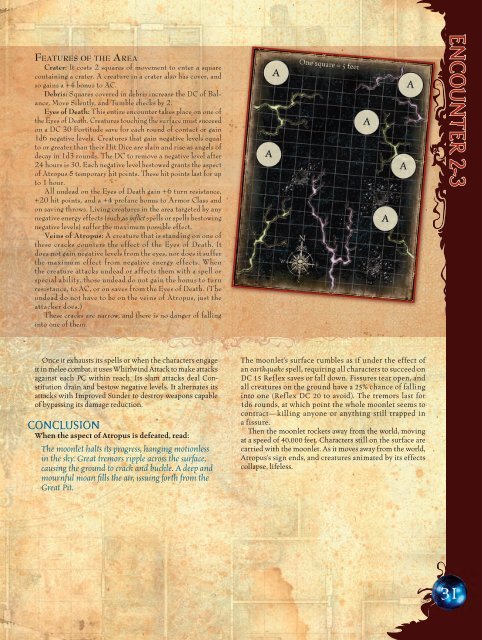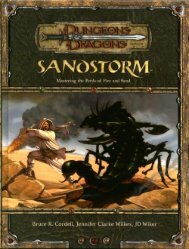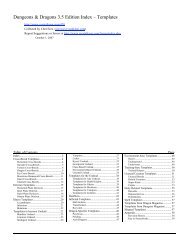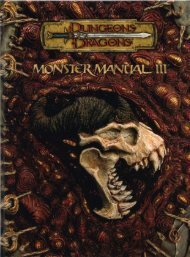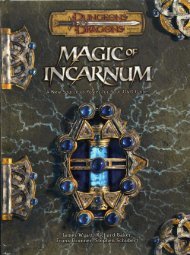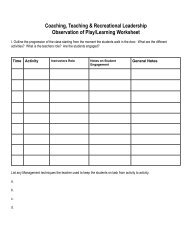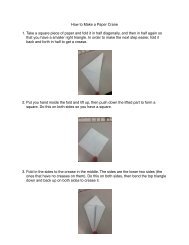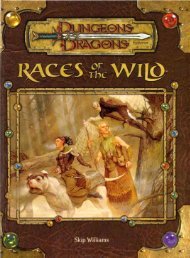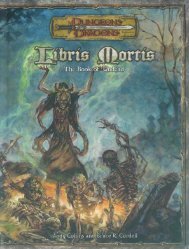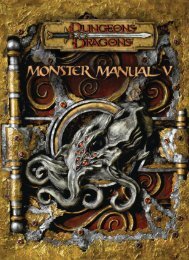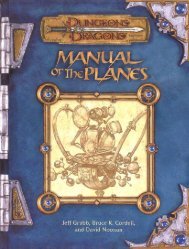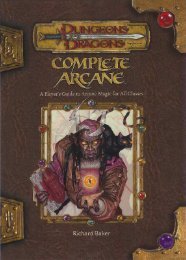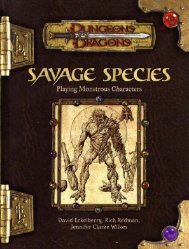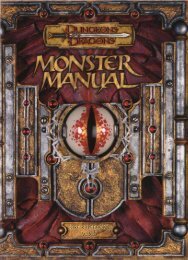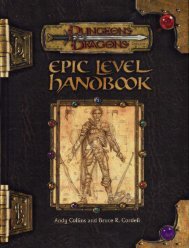Create successful ePaper yourself
Turn your PDF publications into a flip-book with our unique Google optimized e-Paper software.
FEATURES OF THE AREA<br />
Crater: It costs 2 squares of movement to enter a square<br />
containing a crater. A creature in a crater also has cover, and<br />
so gains a +4 bonus to AC.<br />
Debris: Squares covered in debris increase the DC of Balance,<br />
Move Silently, and Tumble checks by 2.<br />
Eyes of Death: This entire encounter takes place on one of<br />
the Eyes of Death. Creatures touching the surface must succeed<br />
on a DC 30 Fortitude save for each round of contact or gain<br />
1d6 negative levels. Creatures that gain negative levels equal<br />
to or greater than their Hit Dice are slain and rise as angels of<br />
decay in 1d3 rounds. The DC to remove a negative level after<br />
24 hours is 30. Each negative level bestowed grants the aspect<br />
of Atropus 5 temporary hit points. These hit points last for up<br />
to 1 hour.<br />
All undead on the Eyes of Death gain +6 turn resistance,<br />
+20 hit points, and a +4 profane bonus to Armor Class and<br />
on saving throws. Living creatures in the area targeted by any<br />
negative energy effects (such as inflict spells or spells bestowing<br />
negative levels) suffer the maximum possible effect.<br />
Veins of Atropus: A creature that is standing on one of<br />
these cracks counters the effect of the Eyes of Death. It<br />
does not gain negative levels from the eyes, nor does it suffer<br />
the maximum effect from negative energy effects. When<br />
the creature attacks undead or affects them with a spell or<br />
special ability, those undead do not gain the bonus to turn<br />
resistance, to AC, or on saves from the Eyes of Death. (The<br />
undead do not have to be on the veins of Atropus, just the<br />
attacker does.)<br />
These cracks are narrow, and there is no danger of falling<br />
into one of them.<br />
ENCOUNTER 2-3<br />
Once it exhausts its spells or when the characters engage<br />
it in melee combat, it uses Whirlwind Attack to make attacks<br />
against each PC within reach. Its slam attacks deal Constitution<br />
drain and bestow negative levels. It alternates its<br />
attacks with Improved Sunder to destroy weapons capable<br />
of bypassing its damage reduction.<br />
CONCLUSION<br />
When the aspect of Atropus is defeated, read:<br />
The moonlet halts its progress, hanging motionless<br />
in the sky. Great tremors ripple across the surface,<br />
causing the ground to crack and buckle. A deep and<br />
mournful moan fills the air, issuing forth from the<br />
Great Pit.<br />
The moonlet’s surface rumbles as if under the effect of<br />
an earthquake spell, requiring all characters to succeed on<br />
DC 15 Reflex saves or fall down. Fissures tear open, and<br />
all creatures on the ground have a 25% chance of falling<br />
into one (Reflex DC 20 to avoid). The tremors last for<br />
1d6 rounds, at which point the whole moonlet seems to<br />
contract—killing anyone or anything still trapped in<br />
a fissure.<br />
Then the moonlet rockets away from the world, moving<br />
at a speed of 40,000 feet. Characters still on the surface are<br />
carried with the moonlet. As it moves away from the world,<br />
Atropus’s sign ends, and creatures animated by its effects<br />
collapse, lifeless.<br />
31


